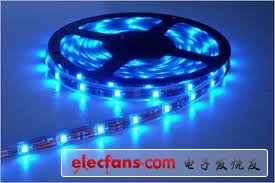Lighting design must meet the functional requirements; lighting is an important means of decorating and beautifying the environment and creating an artistic atmosphere; lighting is not necessarily better, and the key is to be scientific and reasonable; lighting design requires absolute safety and reliability .
1. Functional principle
The lighting design must meet the functional requirements, select different lighting methods and lamps according to different spaces, different occasions, and different objects, and ensure appropriate illuminance and brightness. For example: the lighting design of the conference hall should use vertical lighting, which requires uniform brightness distribution to avoid glare. It is generally appropriate to use comprehensive lighting fixtures; shop windows and merchandise display, in order to attract customers, usually use strong light to emphasize The brightness of the image of the product is 3 to 5 times higher than that of general lighting. In order to strengthen the three-dimensional sense, texture and advertising effect of the product, directional lighting fixtures and colored light are often used to increase the artistic appeal of the product.

2. Aesthetic principle
Lighting is an important means of decorating and beautifying the environment and creating an artistic atmosphere. In order to decorate the interior space, increase the space level, render the ambient atmosphere, use decorative lighting, and use decorative lamps is very important. In the environmental design of modern home buildings, movie theater buildings, commercial buildings and entertainment buildings, lighting has become a part of the whole. Lamps not only play a role in ensuring lighting, but also pay attention to their shape, materials, colors, proportions, scales. Lamps have become an indispensable decoration for indoor spaces. The lighting designer makes full use of the brilliance and color of the light through rhythmic control of light, darkness, appearance, suppression, strength and weakness of the light. It uses various means such as transmission, reflection and refraction to create warmth, softness, tranquility, elegance and joy. Artistic atmospheres such as romance, brilliance, magnificence, joy and joy, bright rhythm, mystery, unpredictability, and confusing, add a variety of fun to people's living environment.
3. Economic principles
Lighting is not necessarily better, and the key to winning is to be scientific and reasonable. The lighting design is to meet the needs of people's visual physiology and aesthetic psychology, make the indoor space reflect practical value and appreciation value to the maximum, and achieve the unity of use function and aesthetic function. Flashy lighting not only does not add icing on the cake, but it also adds a lot to it. At the same time, it causes electricity consumption, waste of energy and economic losses, and even causes pollution of the light environment and damages the health of the body.
The standard of the brightness of the light is different because of the different requirements of the use and the resolution of the resolution.
4. Security principles
The lighting design requires absolute safety and reliability. Since the lighting comes from the power supply, strict safety measures such as electric shock prevention and circuit breaking must be taken to avoid accidents.
Transformer For Renewable Energy
Transformer For Renewable Energy, Solar Transformer,Wind Mill Transformer, Energy Station
Hangzhou Qiantang River Electric Group Co., Ltd.(QRE) , https://www.qretransformer.com